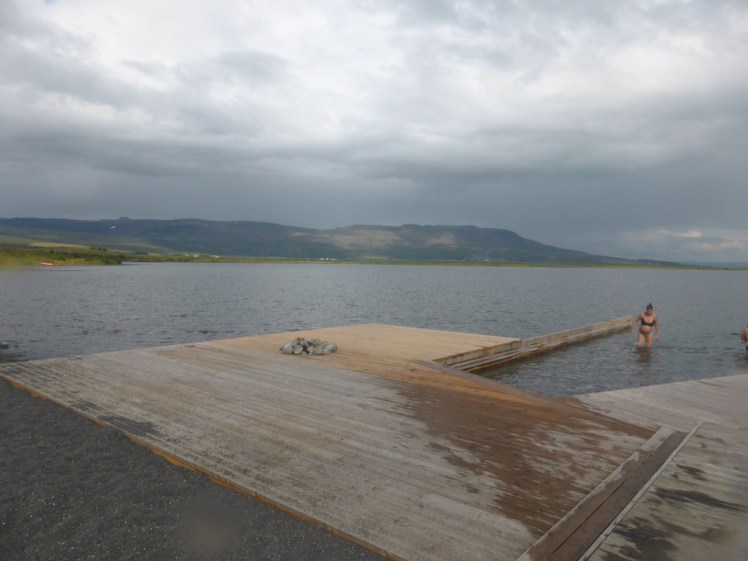In today’s A-Z of Iceland, we’re off to the spa. F is for Fontana.
Considering its position on the edge of the Golden Circle and the fact that it’s used by tour companies on their “Northern Lights and…” nights and also the fact that it’s amazing, Laugarvatn Fontana is surprisingly little-known.
It’s the smallest of Iceland’s three tourist spas and possibly my favourite. Millions of words have been expended on the delights of the Blue Lagoon and I love the volcanic wildness of Mývatn Nature Baths but Fontana is special and it’s always worth a detour.

First of all, Laugarvatn, the lake. The name more or less means the bathing lake and back in 1000AD when the Vikings adopted Christianity, they marched down the road from Þingvellir to be baptised in the warm lake here rather than in the freezing waters that surround the Law Rock. Laugarvatn is mostly chilly water, like just about every lake in Iceland but there’s a hotspot just here that causes overgrown jacuzzi-style jets of boiling water to spray up into the lake. Fontana has its own patch of beach and jetty where you can swim and paddle and even sunbathe in safety but I’d still be careful. Actually, I probably wouldn’t go in at all. I’ve tried before and the lake is a bit cold for my taste. The abundance of hot bathing water in Iceland makes me very averse to cold water. Some mad people go in there in winter when most of the lake’s frozen. I imagine it’s easier to spot the hot patches in winter.

That same hotspot produces steam and that’s Fontana’s main draw. There’s a steam room built directly over the steam vent – free range organic fresh natural steam straight from the ground. Of course, it stinks of sulphur, especially in a confined space but that’s exactly what Fontana came to exist for. The sauna is also free range organic etc but it smells less.
I like it there for the four outdoor pools. Three of them have names – Lauga is a miniature swimming pool, of about average temperature for an outdoors lane pool. Sæla is a long shallow pool, just deep enough to lie in, filled with black lava sculptures and fountains, comfortably warm. Viska is a half-moon hotpot, raised up so you can see the rest of the spa and the lake and mountains beyond. It’s pretty hot. And the last one, which doesn’t seem to have a name, is my favourite – it’s carved out of black lava, with boulders to lounge on, a natural rather than tiled bottom and very few lights. It’s almost disorienting to sit in on a winter night but it’s closest to my favourite temperature.



The whole place is small. You couldn’t get a quarter of the Blue Lagoon crowd in here if you stacked them like sardines. My favourite time to go is in the evening, either as a precursor to a night of Northern Lights hunting in the winter or before I go back to my tent at the village campsite in the summer. It’s quieter in the evenings, when those tourists who’ve discovered it return to Reykjavík or the Hotel Rangá. It’s also cooler – look at me complaining about the heat in a notoriously cold country! – which means it’s more comfortable to sit in the hot water. Mind you, in the winter you’re best off picking a pool and sticking to it. Steam and water and freezing temperatures mean it can be treacherously icy to move between the pools.

Fontana doesn’t offer any spa treatments as far as I can see but what it does have is that Bank of underground heat. Twice a day Fontana does a geothermal experience where a vat of rye dough is buried in the hot sand behind the spa and yesterday’s dug up. If you’re not there for the experience, they sell volcanic rye bread in the cafe, as well as a smorgasbord of other Icelandic delicacies – and chocolate cake.
2 thoughts on “The A-Z of Iceland: F for Fontana”